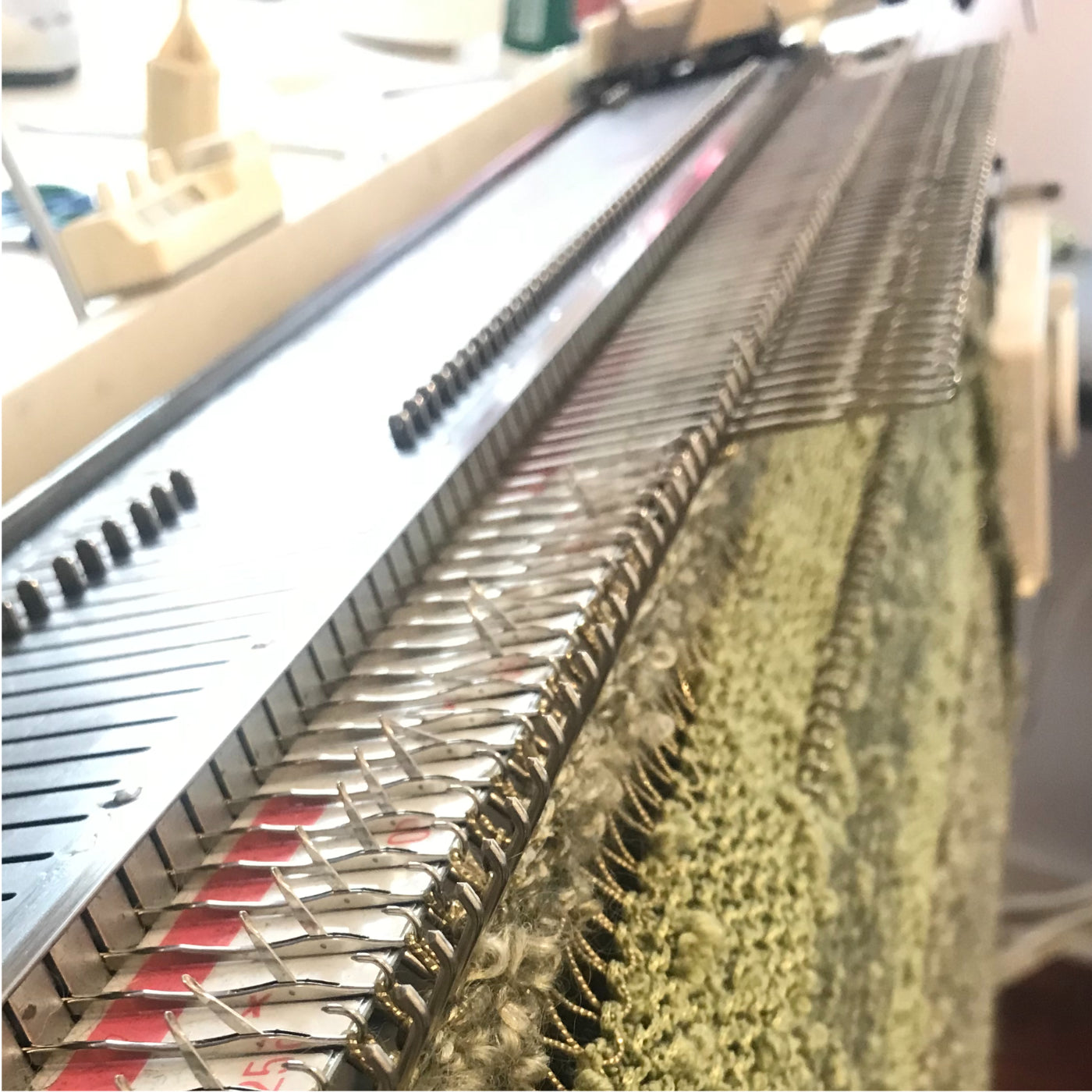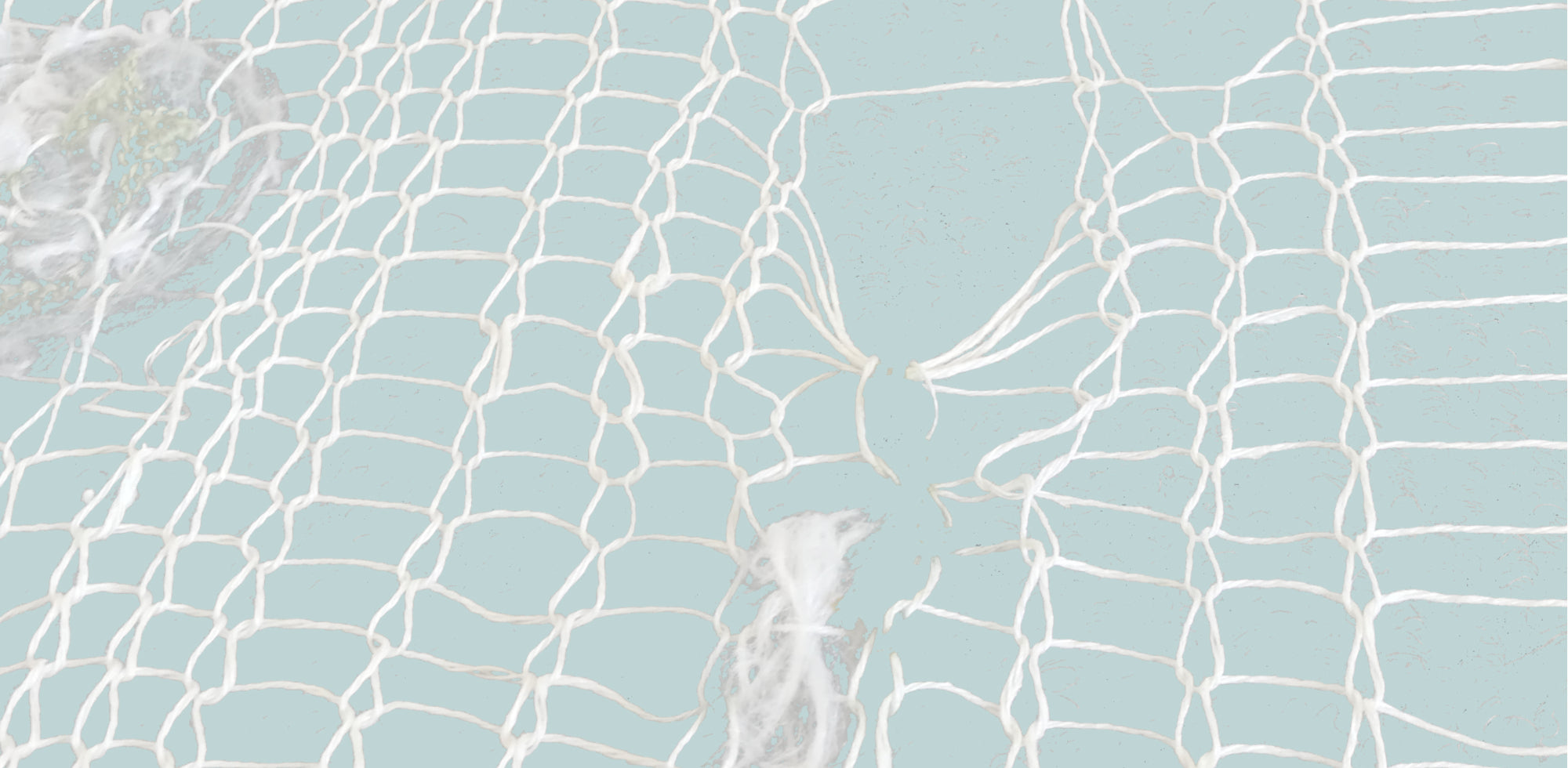how we do it
the production process
All knitting processes turn a quantity of yarn into a knitted product. In the case of hand knitting as a hobby this can take months, while in an industrial set-up knitting time, especially, is measured in minutes or hours.
We fall somewhere between those extremes. Here is a look at the tools we use and how the production process flows.

Subheading
The machines
The bulk of our production is done on vintage domestic knitting machines.
Our machines all come from the seventies and early eighties, making then 40 - 50 years old. In those decades they were quite common in South Africa, but then largely fell out of use when mass-produced imports, mostly in synthetic yarns, became widely and cheaply available. Recent years have seen a modest revival in their use, internationally as well as here.
When they hear "knitting machine" people sometimes imagine that we press some buttons or do some programming and the machine does the rest. On the contrary: while machine knitting is a lot faster than hand knitting, it is still an extremely hands on process. A knitting machine is to hand knitting like a sewing machine is to hand sewing: it speeds up the process, without taking away the requirement for skill.
A domestic machine doesn't use electricity: it runs on focused, skilled, time consuming, manual person power. It takes a great deal of skill and practice to really master these amazing pieces of equipment. Resilience comes in handy too: each of them can turn from docile workhorse into temperamental beast in the blink of an eye!
the workflow
KNITTING
Every knit starts with a pattern and the requisite yarn. Machine knitters much prefer to work with yarn on cones, but we can and do also use hand knitting yarn, which comes in little balls.
Each garment / piece is knitted by a single knitter on their own machine. Most garments are knitted in pieces: the front, the back, the sleeves, maybe a neck band and pockets. Once the knitting is completed, the pieces have to rest for a while: they get stretched while on the knitting machine, and need a few hours for the fibres to recover.
STEAMING
Then it's time to steam: every single piece is given an attentive going over with a powerful steamer to further relax the fibres and coax the pieces into their final shape and dimensions. No pressure is used: just the power of hot steam, an understanding of how various knitted fabrics behave, and patience!
PUTTING IT TOGETHER
Once steamed a garment is ready to be put together. Wrapt pieces are predominantly hand finished: this produces seams that are so neat that you could wear your garment inside out if you feel like it! :-)
Individual seams get steamed, and once the whole thing has come together, it gets steamed again, measured, checked for symmetry and generally inspected. Because of the nature of knitted fabric, as well as small variances that can occur between batches of natural yarns, between knitting machines and between knitters, each project has a margin of variance that is deemed acceptable, eg 1cm variance in width.
LABELS & TAGS
Neck, care and size labels are attached either by hand or, occasionally, with a sewing machine. Only natural fibres are used for the sewing.
Lastly swing tags are attached (if required) - and then we say "ta-da!" and send it out.

